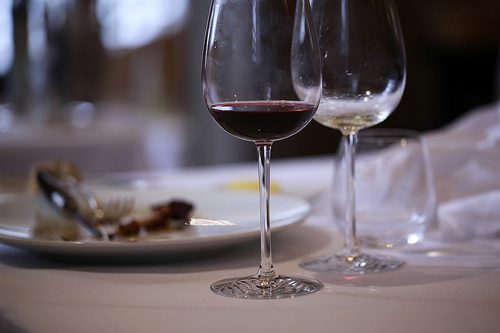Big, Bright and Buttery: Making Sense of Common Wine Descriptions
Pick up any bottle of wine and read the label, and you might think that you need a “Wine to English” dictionary. Terms like “notes of,” “oaky,” “aroma” and “finish” might have you scratching your head, and reaching for the same bottle of generic wine that you’ve been drinking for years.

The problem only compounds when you try to buy wine online. Since an online wine store most likely has a larger selection of wines than your local grocery store or wine shop, with bottles from wineries around the world, including boutique wineries with limited distribution, unless you understand the terminology — or you’re adventurous and willing to part with cash on something that you’re not sure you’ll enjoy — you might be at a loss and choose only what’s familiar instead of branching out for something new.
Most wineries use a standard vocabulary to describe their offerings, making it easier for customers to choose a variety that they will enjoy. The more wines you taste, the better you’ll become at discerning exactly what these words mean, but understanding the basic definitions will help you identify wines that you’ll probably like — or not — simply by reading the labels.
Crisp, Sweet and Dry, Oh My
The first rule of wine terminology is to forget what you think a term means, because in many cases, it’s not what you think. For example, in wine terms, “fruity” has nothing to do with the flavor of the wine; a fruity wine, in most cases, will not be sweeter than any other or taste like fruit. The term refers to the aroma of the wine; when you smell and taste the wine, you’ll catch the scent of particular fruits (like cherries, grapefruit, apple or berries), which can be subtle or intense, depending on the winemaker.
“Dry” is another term that often confounds novice wine drinkers. Basically, when a wine is dry, it’s not sweet. Most table wines are dry, as sweeter wines have a tendency to clash with food thanks to their higher sugar content. Wine varieties like chardonnay, sauvignon blanc, merlot, pinot noir and cabernet sauvignon tend to be dry, although there are always exceptions within each type. Wines from very hot growing regions, like Australia and California, tend to be somewhat sweeter than wines from other areas, and therefore do not taste as dry.
Some inexperienced wine tasters confuse dry with “crisp,” a term that refers to how acidic the wine tastes. White wines tend to be crisper than reds, with a more refreshing and tart taste. Red wines tend to be softer and heavier feeling in the mouth, although some can be more tannic. Tannins add a slightly bitter flavor to wine; a wine that is very tannic will feel slightly acidic and leave the mouth feeling dry after tasting.
You might also find a wine described as “buttery,” which is another way of describing a soft wine. Buttery wines are usually aged in oak barrels and feel creamy, almost oily, on the tongue and have almost no bitterness.


The Mighty Oak
If there is one term that you’re bound to encounter more than any other when buying wine, it’s “oak,” or some variation of it. Of all of the influences on the flavor of a wine, oak is perhaps the most pervasive, as most wines are fermented or stored in oak barrels.
When a wine is described as “oaky,” it means that the influence of the barrel is easily detectable in the wine’s favors. In white wines, oak tends to impart a butter or vanilla favor to the wine, while oak’s influence on red wines tends to be more of the vanilla, dill or baking spices (cinnamon, clove, etc.) variety. In some cases, the wine is described as “toasty,” meaning that the wine has a slight caramel flavor to it as a result of being stored in a very specific type of oak barrel. You might even find wine described as “unoaked,” which means that the wine doesn’t have any butter, vanilla or spicy notes, but instead is more acidic or lemony, particularly in the case of unoaked white wines.
These are only but a few of the terms that are commonly used to describe wine, but there are hundreds of descriptors employed by winemakers to try and capture the flavor of their offerings. While the only way to determine whether you actually like a wine or not is to taste it, if you can’t open the bottle before you buy, knowing what the winemaker’s referring to can help you make an informed decision. If you keep track of the wines you enjoy and their descriptions, you can try new wines with confidence.
About the Author:
Maren Ayala is a confirmed oenophile who has made it her goal to taste as many wines as possible. Her favorite everyday wine is a 2010 pinot noir from Oregon’s Willamette Valley, which she describes as soft and buttery.


